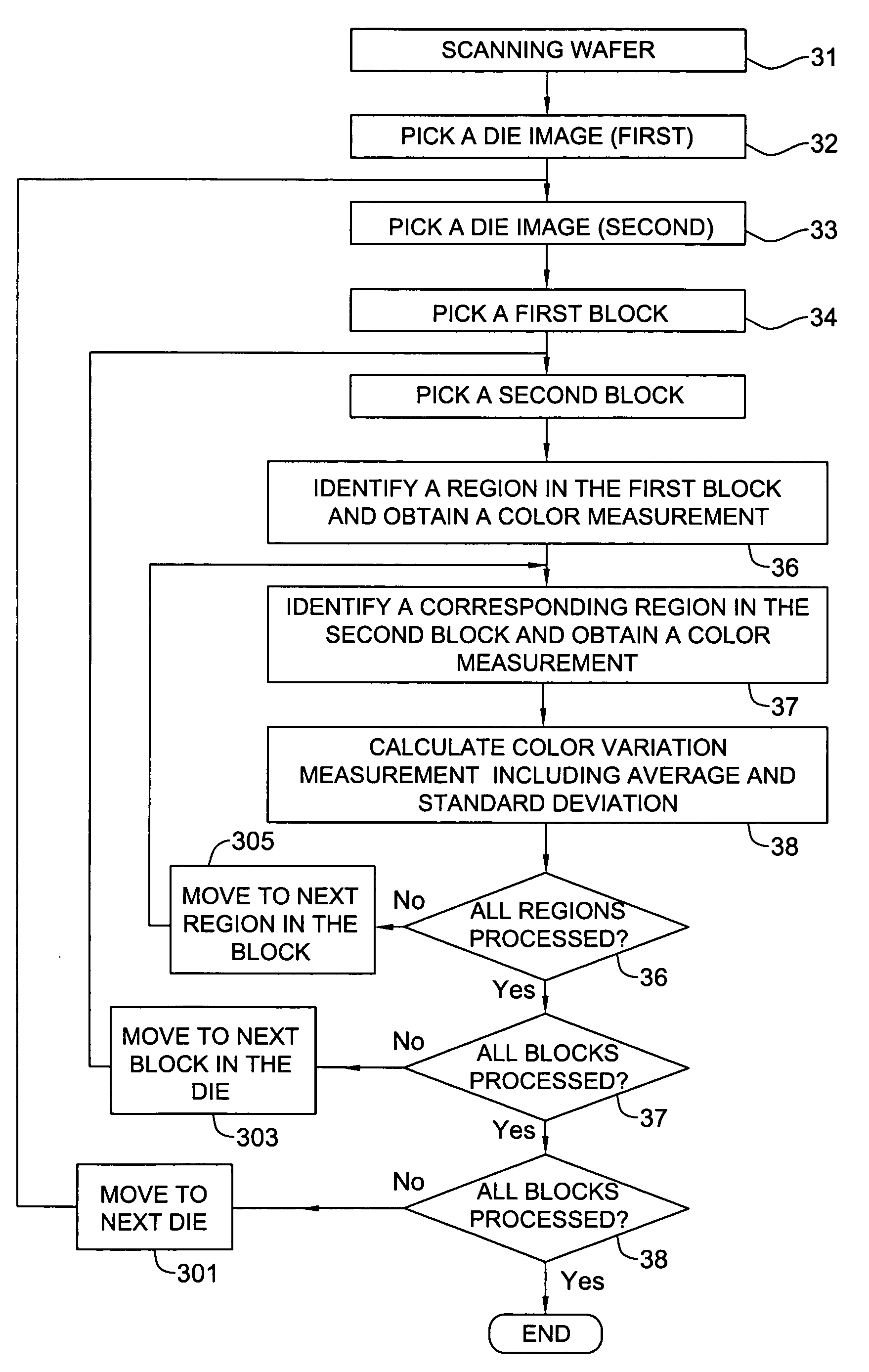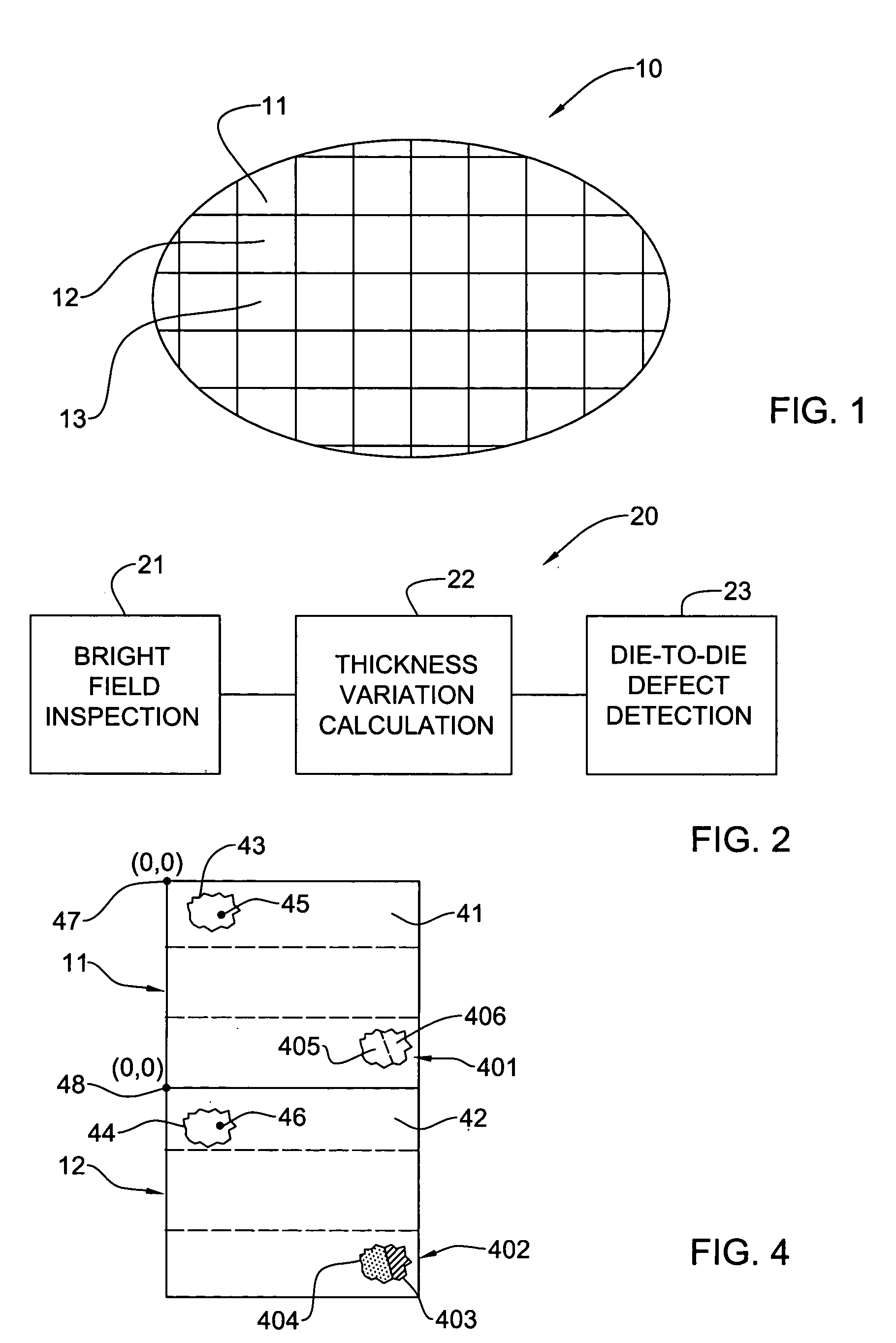System and method for measuring thin film thickness variations and for compensating for the variations
a thin film thickness and variation technology, applied in image data processing, decorative arts, decorative surface effects, etc., can solve the problems of large change in reflectivity, small thickness change for different dies, and interference patterns
- Summary
- Abstract
- Description
- Claims
- Application Information
AI Technical Summary
Benefits of technology
Problems solved by technology
Method used
Image
Examples
Embodiment Construction
[0050] Those versed in the art will readily appreciate that the various calculation / processing operations described with reference to specific embodiments of the invention are carried out by a processor. Note that the term processor embraces any processing system including one or more processing devices operating in accordance with the following non limiting variants: serially / parallel / distributed and / or in a single location or remote one with respect to the other and communicating through communication network / link. Other variants are applicable, all as required and appropriate.
[0051] Note also that thickness variations, such as those introduced by Chemical Mechanical Planarization (CMP) technique are mapped to detected signal Gray Level (GL) variations between ideally identical pixels.
[0052] GL variations (referred to also as detected signal variation) that arise from thickness variations across the wafer are a slow phenomenon compared to pixel changes resulting from defects. Th...
PUM
| Property | Measurement | Unit |
|---|---|---|
| thickness | aaaaa | aaaaa |
| width | aaaaa | aaaaa |
| defect | aaaaa | aaaaa |
Abstract
Description
Claims
Application Information
 Login to View More
Login to View More - R&D
- Intellectual Property
- Life Sciences
- Materials
- Tech Scout
- Unparalleled Data Quality
- Higher Quality Content
- 60% Fewer Hallucinations
Browse by: Latest US Patents, China's latest patents, Technical Efficacy Thesaurus, Application Domain, Technology Topic, Popular Technical Reports.
© 2025 PatSnap. All rights reserved.Legal|Privacy policy|Modern Slavery Act Transparency Statement|Sitemap|About US| Contact US: help@patsnap.com



